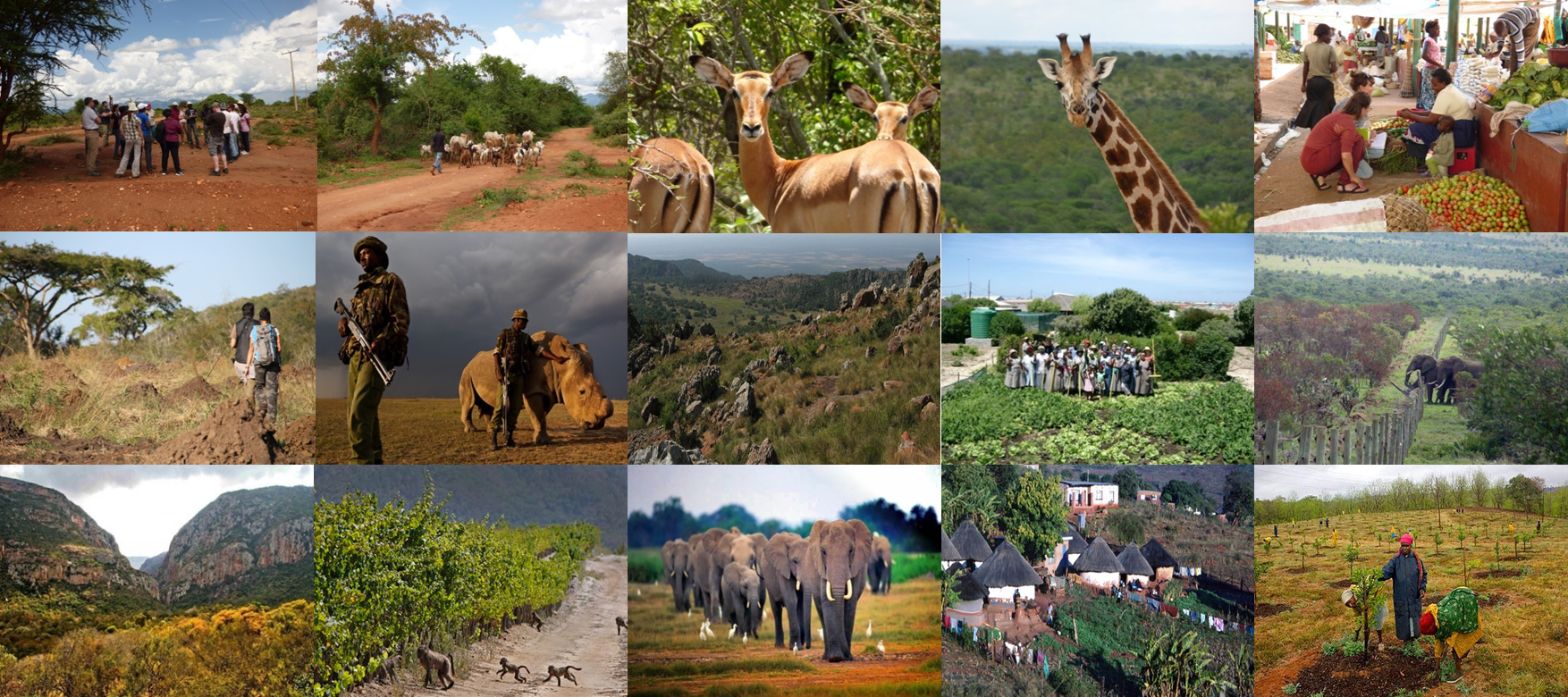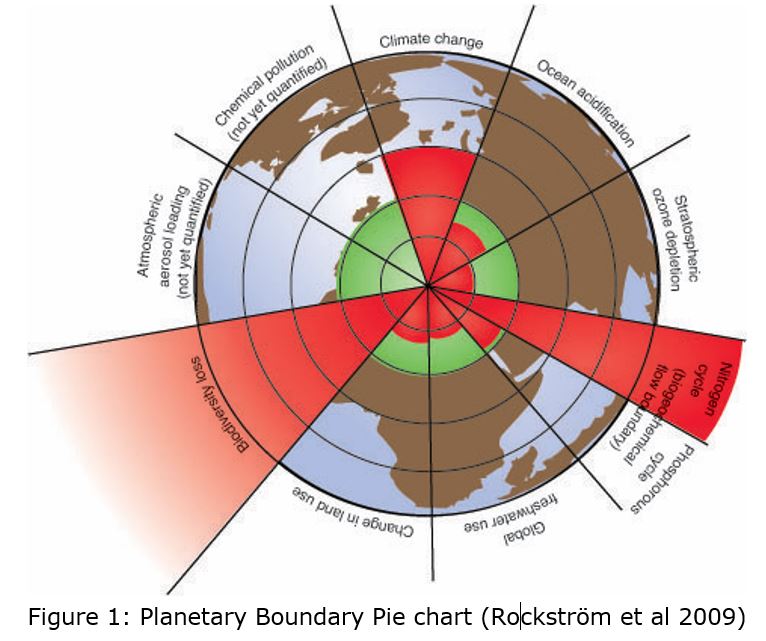The Science of Conservation
You are here

International on-site postgraduate course
The Science of Conservation
Managing biodiversity in a changing world
To be announced
Southern African Wildlife College, South Africa

Scope
Due to human land use, climate change and economic pressures, the world around us is changing rapidly, with drastic negative consequences for our natural environment and the biodiversity it harbours. Of the many global environmental challenges we are confronted with, biodiversity loss is clearly one that is surpassing sustainable boundaries, indeed more than any other over the past decades (Mace et al 2014, see fig 1: Rockström et al 2009). The repercussions of these losses will be enormous for both the functioning of ecosystems as well as the livelihoods of people.
In many areas rewilding of the environment, in terms of vegetation and wildlife, has become common practice as possible policy measure to counter biodiversity loss. Although this is seen as a positive development, as biodiversity may provide opportunities in the form of ecosystem services (e.g. pollination, natural food source, recreation and income-generating opportunities through ecotourism), this measure also creates its own challenges. These challenges arise when, for example, increasing numbers of wildlife enter human-dominated landscapes where they may not have occurred for a long time; creating conflicts with agriculture and forestry, increasing zoonotic disease risk, and disease transmission between wild and domestic animals.
Conservation science is often focused on understanding and finding ways to mitigate conflicts between humans and nature and to promote reciprocal opportunities and benefits. The complexity of human-nature interactions raises a fundamental question: How do we balance diverse and sustainable vegetation and wildlife with the requirement of social and economic sustainability? In other words, how can we understand and promote sustainable conservation of nature? This question is central to the 2020 course on the science of conservation.
During the course, we will lecture and discuss topics that are at the frontier of conservation research. The following lecturing programme is proposed:
- The complexity of biodiversity conservation
- Biodiversity as source of ecosystem services; threats and opportunities
- Exploring the relationship between nature conservation and societal needs
- Biodiversity management
Course set-up
During the course, we will lecture and discuss topics that are at the frontier of conservation research. The course will last for 14 days and will consist of the following elements:
- Welcome / Introduction to the course
- Introduction lecture (Key note)
- Poster carousel in which lecturers and participants present themselves
- Lectures (morning) (45 minutes):
- 2 lectures per morning on the days that we do not go into the field
- Specific topics to be determined
- Lectures address fundamental scientific elements as well as application
- Followed by plenary discussions
- Plenary discussion (30 minutes):
- These are convened by participants who have prepared the discussion with the material offered by the speaker prior to the course.
- Apart from challenging the speaker on what has been presented and the literature supplied the conveners facilitate the discussion that arises from the rest of the group
- Group work (assignment):
- Participants will be split into groups of 5-6 members.
- Each group is given an assignment. Selection of topics for the group assignments are related to the topics that are at the frontier of conservation research.
- Assignment must be related to an actual issues in the Hoedspruit area that can be investigated by the group.
- Issues must be defined into clear research questions where potential stakeholders are involved in defining the questions.
- In total some 10 topics will be presented and each group selects 1.
- Assignments consist of an analysis of a pending issues that has both fundamental as well as practical elements
- Each group makes a proposal of how they will address the issue (questions to be addressed, methodology and plan of action)
- 2-3 days will be spent in the field to investigate the issue and collect information
- Daily reporting on progress
Lecturers / Organisers contributing to the course
- Ignas Heitkönig (lecturer/organiser; Wageningen University, Netherlands)
- Frank van Langevelde (lecturer/organiser; Wageningen University, Netherlands)
- Bram Büscher (lecturer/organiser; Wageningen University, Netherlands)
- Mike Peel (lecturer; Agricultural Research Council, South Africa)
- Cleo Graf (lecturer; Southern African Wildlife College, South Africa)
- Frank Matose (lecturer; University of Cape Town, South Africa)
- Izak Smit (lecturer; Kruger National Park, South Africa)
- Claudius van de Vijver (organiser; Graduate School PE&RC)
General information
| Target Group | The course is aimed at PhD candidates and other academics |
| Group Size | Min. 20, max. 35 participants |
| Course duration | 14 days |
| Language of instruction | English |
| Frequency of recurrence | Every three years |
| Number of credits | 3 ECTS |
| Lecturers | See above |
| Prior knowledge | No prior knowledge is required |
| Location | To be determined |
Fees
| EARLY-BIRD FEE | REGULAR FEE | |
| PE&RC / WIMEK / WASS / WIAS PhD candidates with an approved TSP | ||
| a) All other PhD candidates b) Postdocs and staff of the above mentioned Graduate Schools |
||
| All others |
More information
Dr. Claudius van de Vijver (PE&RC)
Phone: +31 (0) 317 485116
Email: claudius.vandevijver@wur.nl
Registration of interest
At this moment, this course is not scheduled yet. However, if you register your interest in this activity below, we will inform you as soon as the course is scheduled and registration of participation is opened.

